Impure Functions
Day for Night is a current snapshot of popular music as well as a showcase for trailblazers who continue to cross over from the fringes to become influencers. Eschewing the idea of musical genres, Day for Night focuses instead on acts that specialize in an inventive and highly visual approach to performing.
The Conditional Studio created a playful space for participants to engage algorithms common in computation and computer graphics. A particular challenge was to thread the needle of being pedagogically potent without undermining the mood and atmosphere of the event. In other words, how can you teach people about code while having fun at a concert at 2am?
Impure Functions was a dynamic, visual index of code. It offered the audience a different pace from the main stages and the more frenetic installations. Providing the audience with a sense of the potential of code, cycling between a series of interactive experiences, while uncovering the core media of Day for Night: light, sound, software
Using a wide range of different visual techniques, Impure Functions reveals to the audience with an overview of how images and code relate. The experience was both active, by engaging with a set of interfaces and inputs, and passive, watching the images and the performances of others.

Modules
The focus of the space was a series of interactive modules. Each module contained many unique pieces of software around a theme, each with the potential for small-group and solo interaction.
Module 1 converted one image into another. It brings in a live camera feed and convert that feed into transformed images. Module 1 is a portrait studio, the image from a live camera is filtered through a set of visual algorithms. Multiple people (small groups) used this at the same time for a group-portrait-style of interaction. Algorithms and techniques in this module included slit scanning, frame differencing, sampling, dithering, face recognition, computer vision, blending modes, convolution, and machine intelligence
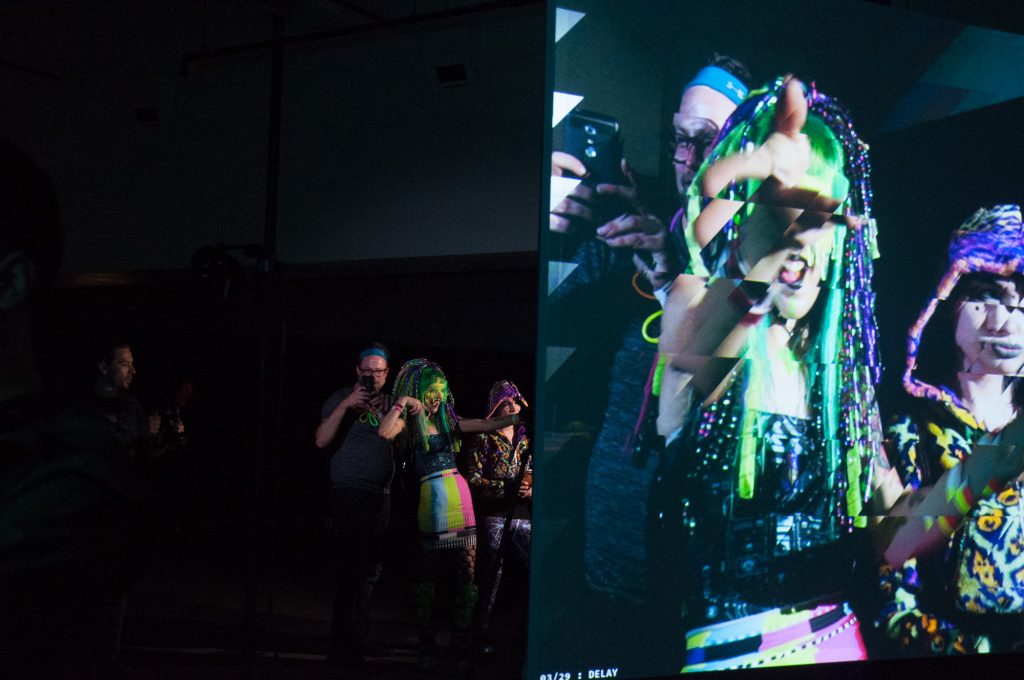
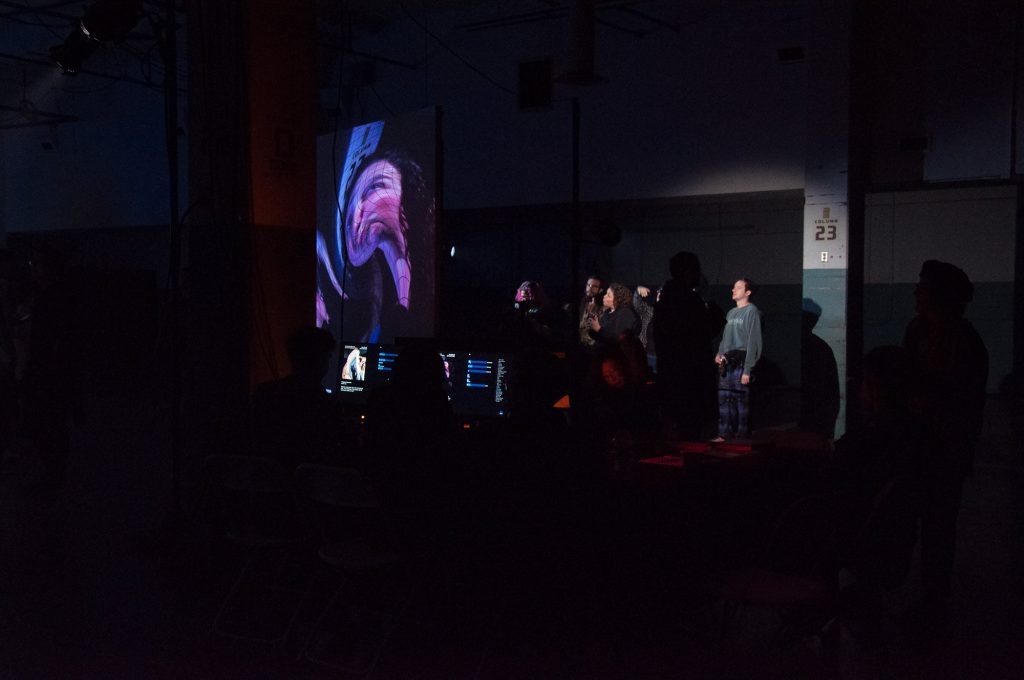
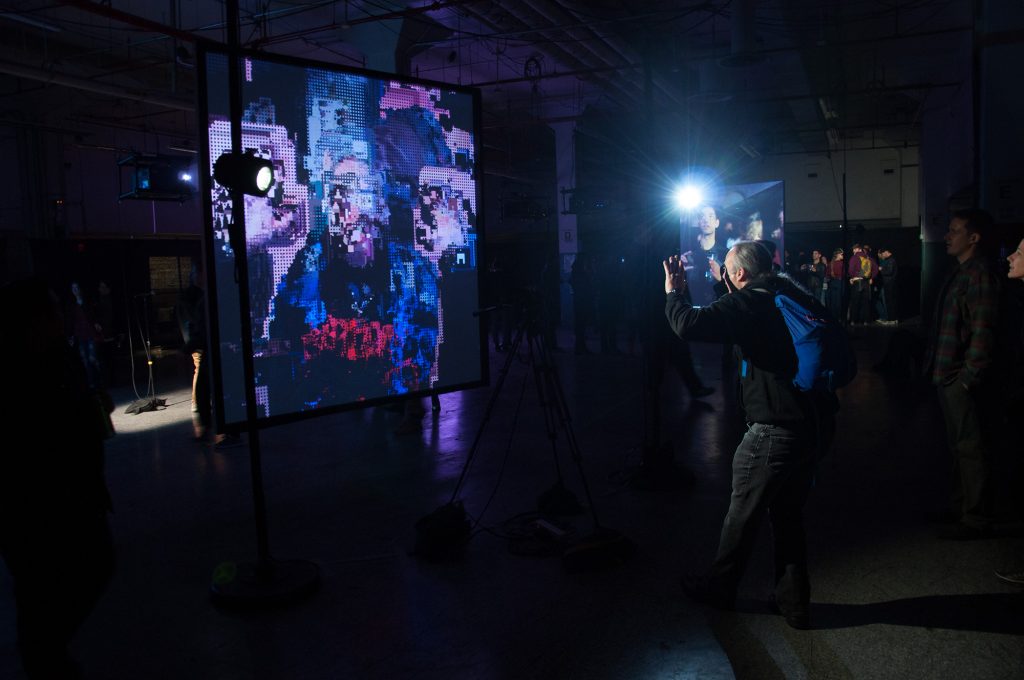
Module 2 converted sound into images by bringing in audio signals and converts them into images via a microphone the audience could speak, sing, and yell into. Algorithms and techniques in this module included particle systems, audio analysis, speech recognition, and fractals.
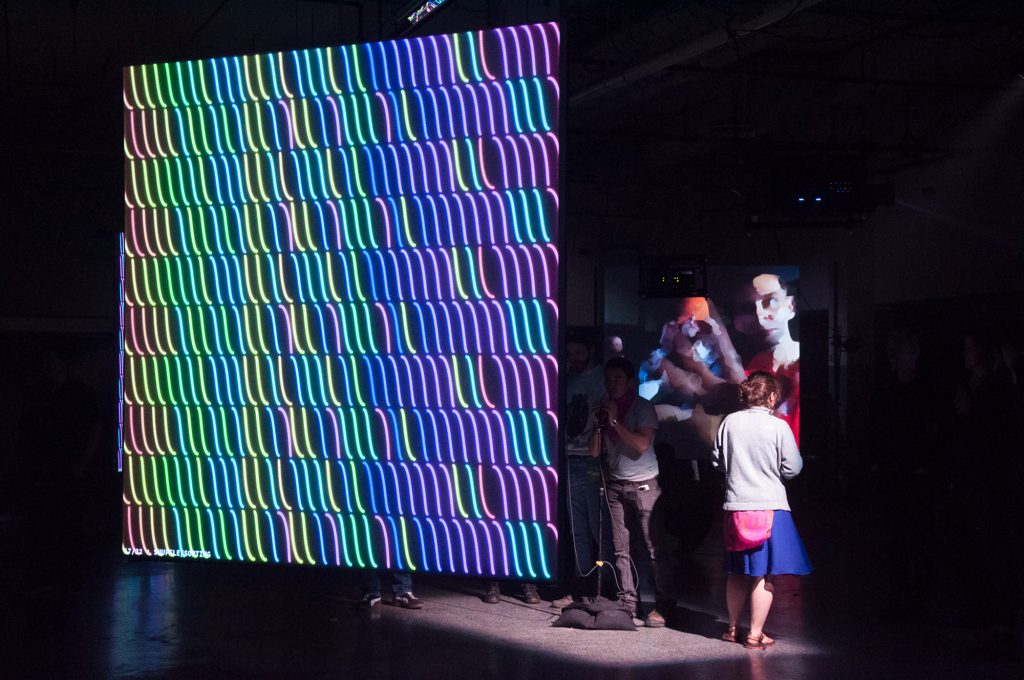
The primary visual experience in the space was an array of large, projected images on floating square scrims so they were legible from both sides.


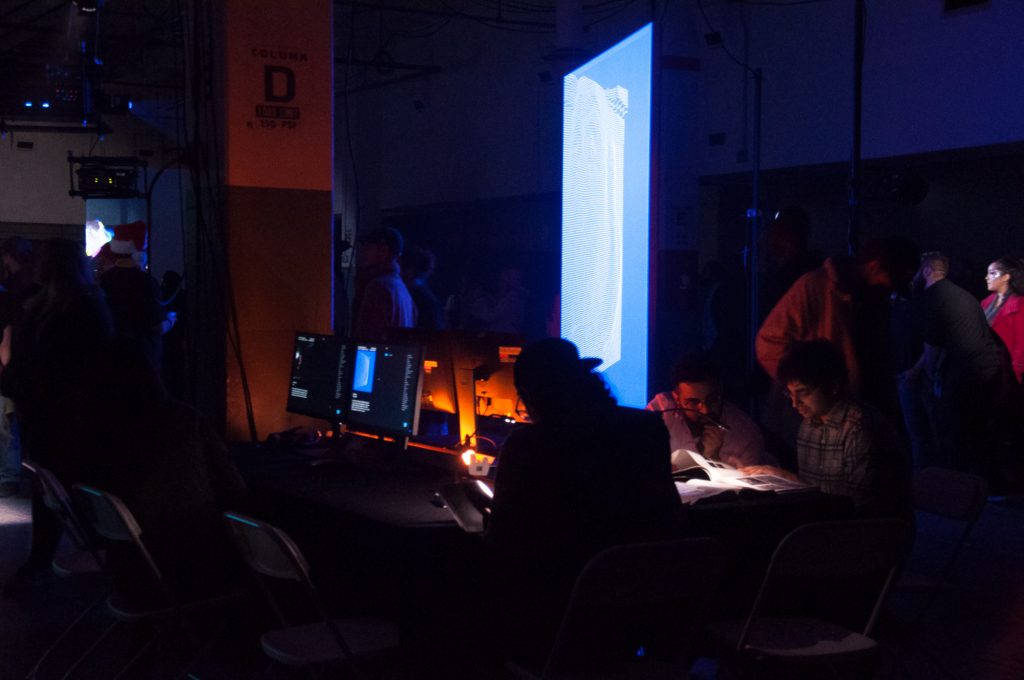
At all times, the space was attended by two to four people who worked on the code, and could discuss the experience with the audience. The attendants sat at a desk in the middle of the space with computers running the software. The secondary screens at this station had intricate custom interfaces for real-time modification and play with parameters.
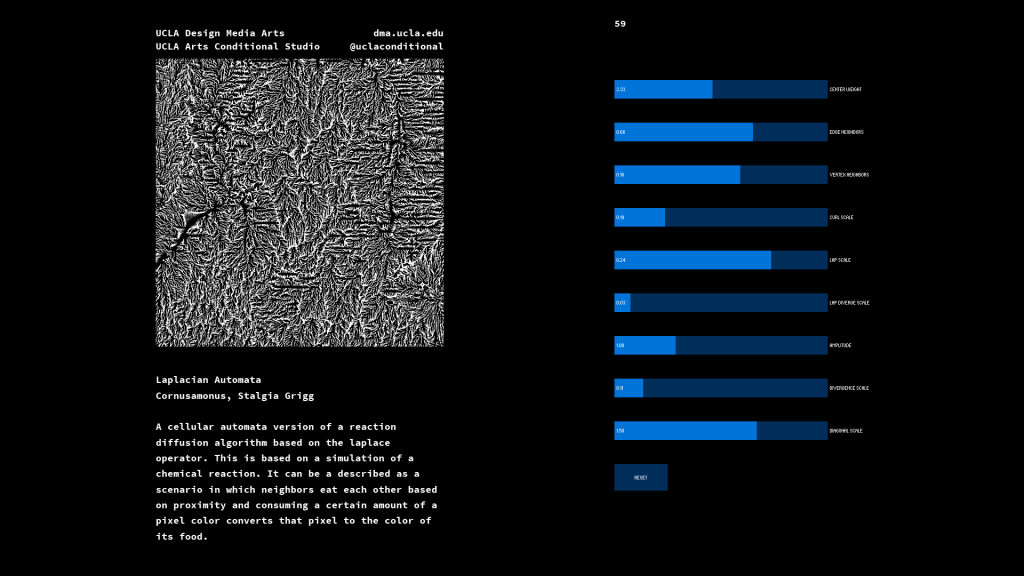
People
- Casey Reas: artist, UCLA professor, Conditional Studio Co-Director
- Chandler McWilliams: UCLA professor, Conditional Studio Co-Director
- Lauren McCarthy: artist, UCLA professor, Conditional Studio Co-Director
- Alice Mira Chung: UCLA DMA Graduate Researcher
- Carlos Garcia: UCLA DMA Graduate Researcher
- Eric Fanghanel: UCLA DMA Graduate Researcher
- Hye Min Cho: UCLA DMA Graduate Researcher
- Stalgia Grigg: UCLA DMA Graduate Researcher